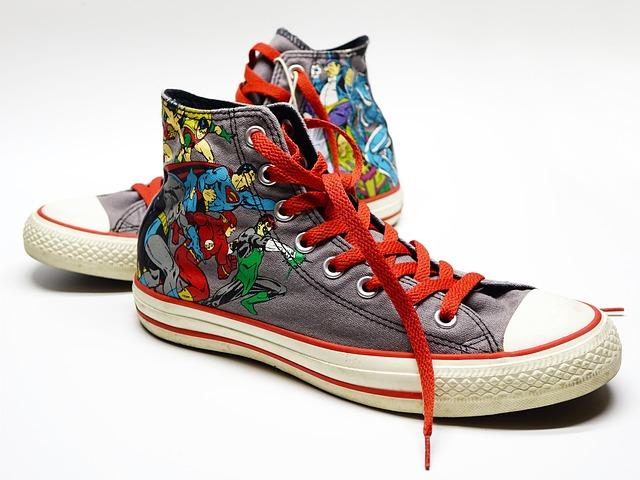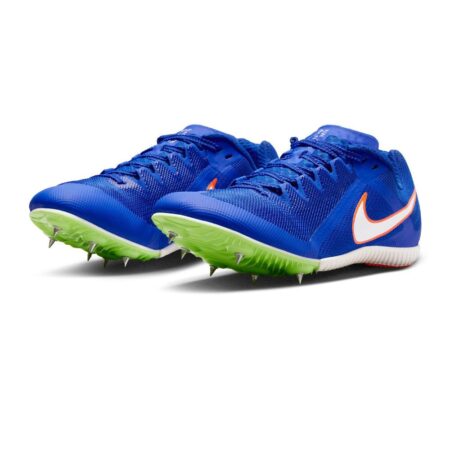A new study published in Nature shines a spotlight on how the choice of footwear and the condition of the playing surface can dramatically influence athletic performance. As athletes continually seek every possible edge, researchers have delved into the acute effects these factors have on sport-specific movements, revealing crucial insights that could reshape training and competition strategies. This breakthrough research underscores the interplay between gear and environment, offering fresh perspectives on optimizing performance in real-world sporting conditions.
Footwear Technology Shapes Athlete Performance Across Different Surfaces
Advancements in footwear technology have become a pivotal factor in enhancing athlete performance across varying sports surfaces. Modern shoes are engineered not only for comfort but also to optimize traction, stability, and energy return. The integration of innovative materials such as lightweight foams, responsive midsoles, and adaptive traction patterns ensures athletes maintain peak efficiency whether competing on synthetic turf, grass, hardwood, or track. These technological breakthroughs directly affect sprint times, jump heights, and overall agility, tailoring performance benefits to the specific demands of each surface type.
Key footwear features contributing to performance improvements include:
- Surface-specific outsole designs that maximize grip and reduce slippage
- Shock-absorbing midsoles that protect joints while boosting propulsion
- Breathable uppers enhancing fit and moisture control
| Surface | Footwear Technology | Performance Benefit |
|---|---|---|
| Artificial Turf | Rubber-studded outsoles | Enhanced grip and acceleration |
| Cross-Country Trails | Trail-specific crampons | Improved traction on uneven terrain |
| Indoor Hardwood | Non-marking rubber soles | Optimal balance and quick direction change |
| Track & Field | Spikes with carbon plates | Maximized energy return and speed |
Surface Conditions Drive Immediate Changes in Speed and Agility
In the dynamic realm of athletic performance, the interplay between surface characteristics and footwear emerges as a critical factor influencing an athlete’s immediate ability to modulate speed and agility. Wet, uneven, or synthetic surfaces prompt rapid neuromuscular adaptations, forcing athletes to recalibrate their foot strike and stride patterns almost instantaneously. This responsiveness is amplified by the type of footwear, where enhanced grip technologies or cushioning systems can either mitigate or exacerbate the challenges posed by the ground underneath.
Empirical observations reveal distinct performance variances across different surface conditions, impacting not only sprint times but also the precision of directional changes. The following table encapsulates average percentage changes in agility metrics recorded under various surface-footwear pairings during high-intensity drills:
| Surface Type | Footwear Type | Speed Change | Agility Change |
|---|---|---|---|
| Dry Grass | Cleats | +3.2% | +4.5% |
| Wet Turf | Studded Trainers | -5.1% | -6.7% |
| Indoor Synthetic | Lightweight Runners | +1.8% | +3.0% |
| Asphalt | Running Shoes | +0.5% | +1.2% |
- Dry grass combined with cleats offers the most conducive conditions for peak agility performances, likely due to optimal traction.
- Wet turf significantly impairs speed and agility regardless of footwear, highlighting the need for cautious movement.
- Indoor synthetic surfaces paired with lightweight footwear enable swift directional shifts with minimal energy loss.
Optimizing Shoe and Terrain Choices for Peak Competitive Edge
Maximizing athletic performance requires a precise synergy between footwear technology and terrain characteristics. Recent studies underscore the importance of selecting shoes that complement specific surface conditions to enhance biomechanical efficiency and reduce injury risk. Lightweight, responsive footwear paired with natural grass or synthetic turf, for example, can significantly improve acceleration and agility, especially in high-intensity sports like soccer and rugby. Conversely, shoes with enhanced cushioning and traction are advisable for uneven or firm surfaces to maintain stability and power output.
Key considerations for athletes include:
- Analyzing surface texture to optimize grip and minimize slippage.
- Choosing footwear with adaptive sole patterns tailored to turf or track conditions.
- Balancing breathability and support in shoe design to sustain endurance.
- Evaluating shoe weight to improve swift directional changes without compromising protection.
| Surface | Recommended Shoe Feature | Performance Benefit |
|---|---|---|
| Natural Grass | Firm ground cleats | Enhanced traction & acceleration |
| Synthetic Turf | Multi-ground soles | Improved stability & energy return |
| Indoor Court | Non-marking, cushioned sole | Superior grip & shock absorption |
| Trail/Uneven terrain | Heavier, rugged outsole | Increased durability & ankle support |
Closing Remarks
In summary, this study underscores the significant impact that both footwear and surface conditions can have on sport-specific performance in athletes. As competition intensifies and marginal gains become ever more critical, understanding these acute effects offers valuable insights for athletes, coaches, and sports scientists alike. Whether on the track, court, or field, choosing the right combination of shoes and surface may well be a game-changer in optimizing athletic output. As research continues to evolve, one thing is clear: the details beneath an athlete’s feet matter more than ever.





